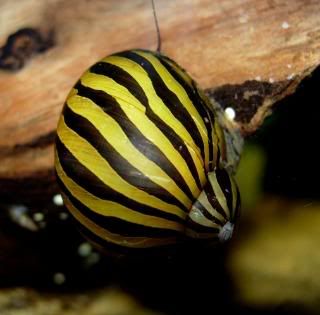I originally commented in some threads about algae or plants about my algae problem, but today I found a third type and decided to make my own thread. I have brown diatoms coating all my fake plants and growing a brown fringe around the edges of the leaves of the only live plant. There is green spot algae on the HOB filter intake. I discovered black, hairy algae on my live plant and inside the filter intake. It is growing very thickly inside the filter intake. I didn't notice until today because my filter is black and it's difficult to see. My lighting is .5 wpg. I do not inject CO2, but I am planning a 1-2 wpg planted tank with CO2 injection. I do not overfeed. My dad used to, but not anymore. I feed once a day with either flakes or shrimp pellets and at night, I feed a combination of blanched vegetables and 1/3 of an algae wafer. My otos did a wonderful job of removing the algae from the side of the tank, until recently. There has been so much brown algae on the fake plants that the otos are choosing to clean the plants over the tank glass. I can post pictures, if you like, but my camera battery needs charged. My tank has been up and running since August. The water needs changed. Right now it is 0 ppm ammonia, <.3 mg/L nitrite, and <.25 mg/L nitrate. My gh is 4 and the pH is a bit high at 8.
If you have more questions, please ask. My tank looks horrid and I'd really love to start a planted tank and get this algae under control.
P.S. Recently, I discovered green hair algae in the 5 gallon tank, but that is the only type of algae. Both tanks have totally different situations.
If you have more questions, please ask. My tank looks horrid and I'd really love to start a planted tank and get this algae under control.
P.S. Recently, I discovered green hair algae in the 5 gallon tank, but that is the only type of algae. Both tanks have totally different situations.



